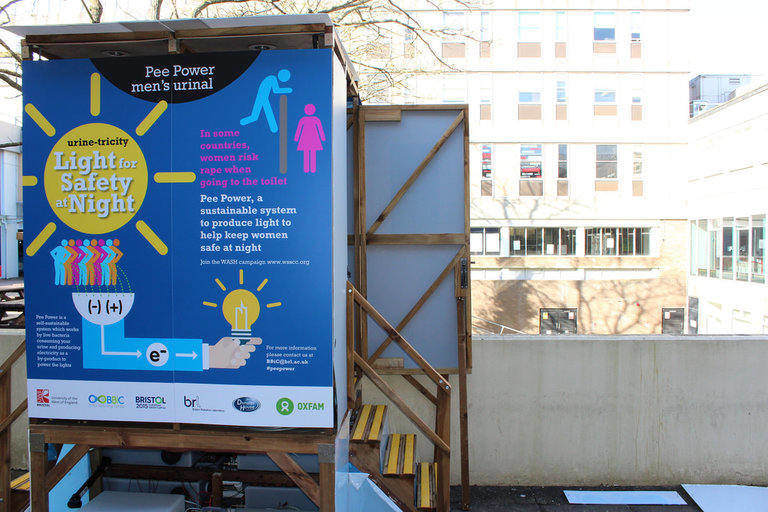By: Andy Extance
Send to a friend
The details you provide on this page will not be used to send unsolicited email, and will not be sold to a 3rd party. See privacy policy.
A prototype toilet that can generate power from urine was launched last week.
The urinal, which is being trialled at the University of the West of England (UWE) in the United Kingdom, is designed to improve security in refugee camps by providing lighting in and around toilets.
UK anti-poverty charity Oxfam, whose researchers are working with those from UWE on the project, say the technology would reduce the threat of rape that many women face in refugee camps. Oxfam hopes to deploy the urinals in South Sudanese camps within six months.
Andy Bastable, head of water and sanitation at Oxfam, cites the Democratic Republic of Congo as a place where many women in displaced persons’ camps have been raped. “The men come back from fighting brutalised, and then brutalise women,” he says. Toilet cubicles in most refugee camps are dark and therefore dangerous places, he adds.
The power-generating toilet uses microbes that feed on human urine to constantly produce electricity, with some electricity storage capacity that saves the power output until needed to turn the lights on.
The overall cost of the urinal is around £600 (around US$900). Bastable hopes that, if the system proves viable after two to three months of testing at UWE, donors will pay for its deployment in South Sudan as a test ground for other refugee camps around the world.
Jack Sim, founder of the World Toilet Organization, which aims to provide safe and clean toilets around the world, says: “This is a great example of how poo and pee can be valuable resources when managed properly.” He agrees with Oxfam that proper toilet design, including adequate lighting, can help to cut the risks women face when using toilets and washrooms.
Ioannis Ieropoulos, a researcher at UWE and one of the toilet’s developers, is working with philanthropic organisation the Bill & Melinda Gates Foundation to find funding to roll out the technology commercially. The aim is to cut the toilet’s cost, which is still a relatively expensive way to generate electricity compared with solar power.
Ieropolous says the prototype was built in a laboratory from off-the-shelf components, without the benefit of mass manufacturing. The university’s aim is to further improve the microbial fuel cells to a level where they can be produced cheaply and distributed to developing countries, he says.
The ultimate target is to run the urinal at a daily maintenance cost of 5 US cents per user.
See below for a video on the prototype ‘Pee-Power’ toilet:














